How to Avoid Skidding on the Road, and How to Get Out of It Safely If It Starts
Even an experienced driver can get into skidding. Harsh weather conditions and a poorly chosen speed can result in the car losing its traction with the road and ceasing to obey your commands.
5-Minute Crafts is explaining to you why skidding occurs and how to gain back control over the car safely.
What skidding is and why it occurs
Skidding is a condition that a car gets into when its wheels lose traction with the road. As a result, the driver loses control over the direction of the car’s movement and can’t manage it fully.
Weather and road conditions, as well as the behavior of the driver behind the wheel, affect the likelihood of a skid. The reasons for skidding can be:
- Driving too fast in certain weather and road conditions, like on icy roads or during rainfall
- Sudden braking, including braking while making a turn, resulting in the lock-up of the wheels
- Harsh accelerating
- Turning the steering wheel too sharply or turning the steering wheel when the vehicle is moving at high speeds
- Mechanical, electrical, or another defect in the vehicle, such as a broken tire
❗ As you can see, skidding often occurs when the car is moving at a high speed. You can significantly reduce the likelihood of skidding by changing the driving speed depending on road conditions.
What types of skids there are
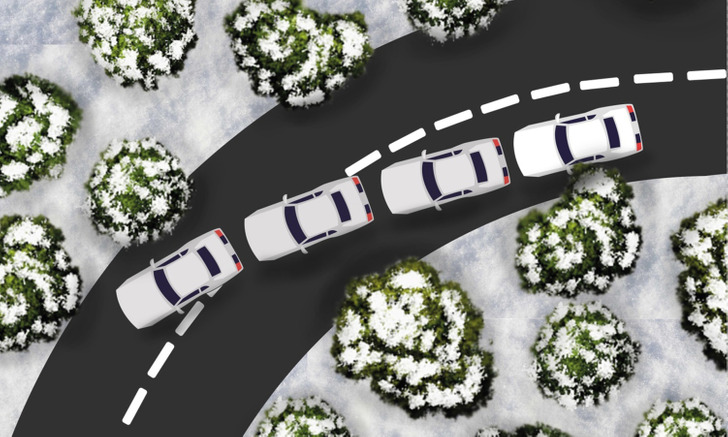
1. Front-wheel skid
A front-wheel skid can be described as an understeer of the car and its disobedience to the actions of the driver. With this type of skid, the driver can turn the steering wheel in a certain direction, but the car can continue to move in a straight line, for example.
A front-wheel skid happens when the front wheels lose traction with the road while the car is moving too fast. This can happen both during normal high-speed driving and while driving on wet, icy roads. Also, the front wheels’ skidding can be caused by harsh braking when making a turn.
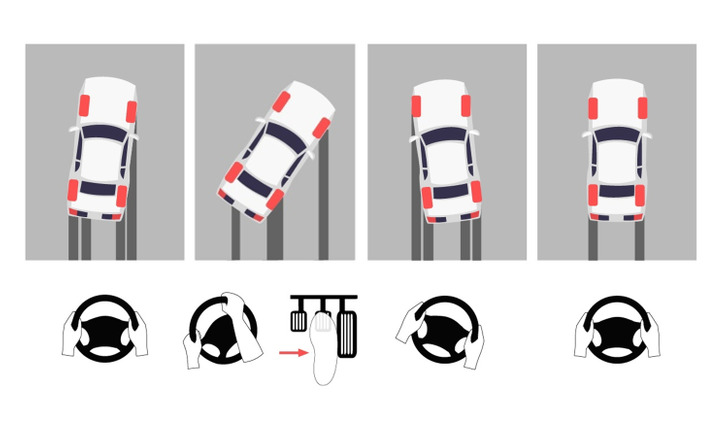
How to get out of a skid:
1. Without pressing the accelerator and brake pedals, carefully keep turning the steering wheel in the intended direction.
2. If the car continues to move to the side, reduce the pressure on the steering wheel and give the brake a brief jab. This action will shift the vehicle’s weight forward and help restore tire traction.
3. Keep steering in your intended direction.
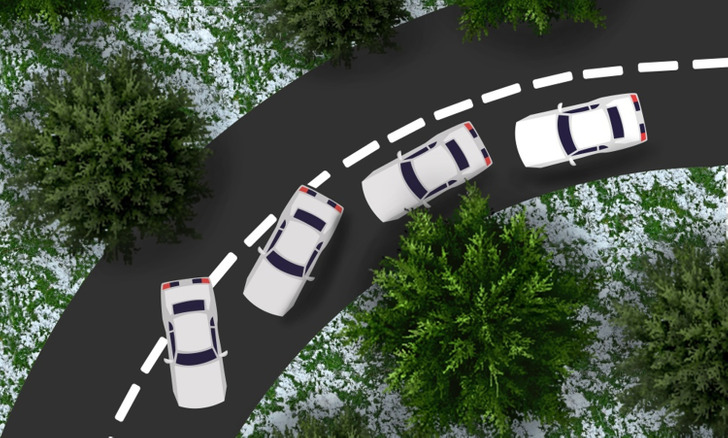
2. Rear-wheel skid
A rear-wheel skid (or oversteer) is a condition that a car gets into when its rear wheels start to go to the side, trying to overtake the front wheels, and turning the vehicle. For example, when cornering at high speeds, the driver can turn the steering wheel in one direction, while the rear of the car will move in the opposite direction.
A rear-wheel skid can occur due to harsh braking or accelerating, or when taking a turn at a high speed. Weather conditions can also contribute to the appearance of the situation, like rain, icy roads, or an icy mass.
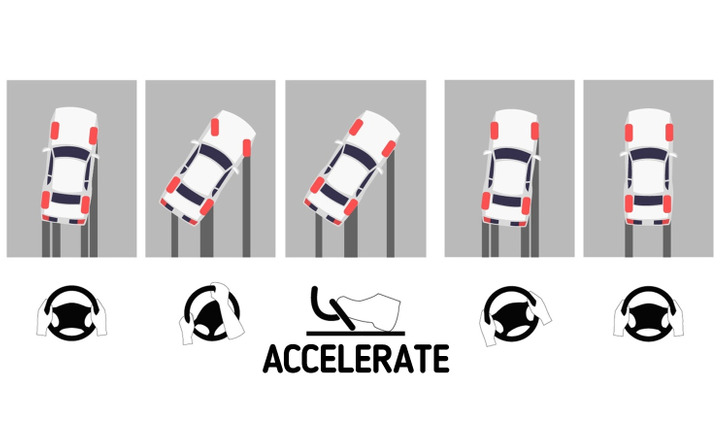
How to get out of the skid:
1. If you feel that the rear part of your car has started to skid, carefully start steering in the direction of the skid without pressing the accelerator or brake pedals. After this, direct the vehicle in the intended direction as carefully as before.
2. Don’t steer the wheel in the opposite of the skid direction, as it can provoke a new skid to the other side.
3. A little pressure on the accelerator can help restore tire traction. However, don’t do it if you are not a confident driver.
3. 4-wheel skid
A 4-wheel skid is when all the wheels lose traction with the road. It is unlikely that all 4 wheels will lock up with the anti-lock braking system (ABS) pre-installed. However, this can happen on vehicles not equipped with ABS.
Such a skid can occur with sharp, extreme braking that provokes the lock-up of the wheels.
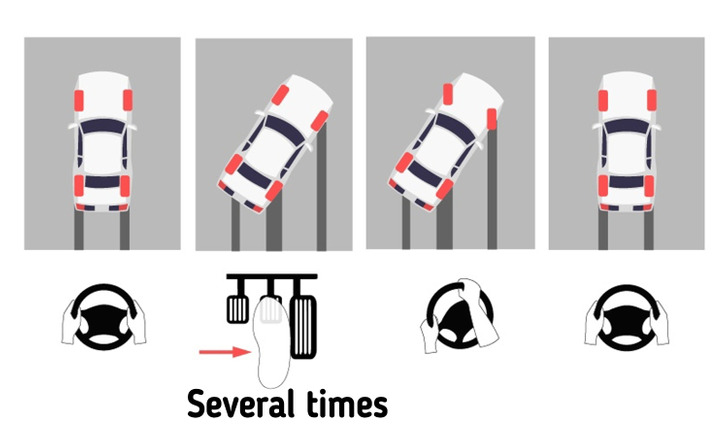
If you find that all 4 wheels of the car are locked up with extreme braking, do the following actions to stop the skid:
1. Remove your foot from the brake pedal.
2. Press the brake pedal with short rhythmical movements. It will give an effect similar to ABS and will help to restore steering control.
How to avoid skidding
Unfortunately, it is not always possible to avoid skidding. But you can reduce the risk of its occurrence if you use the following tips:
- Choose tires with sufficient tread depth and monitor the pressure inside them.
- Slow down when approaching turns and road obstacles. Remember that when driving at high speeds while making a turn, tire traction with the road is reduced.
- Reduce the speed when the road is wet or icy. Slippery surfaces significantly reduce the traction of tires with the road.
- Avoid sudden braking, especially on corners.
- Keep the necessary distance when going after another vehicle. The likelihood of sharp braking is increased when the distance is small — if the car in front of you stops, you will also have to stop. And if the stop is sudden, it can lead to skidding.